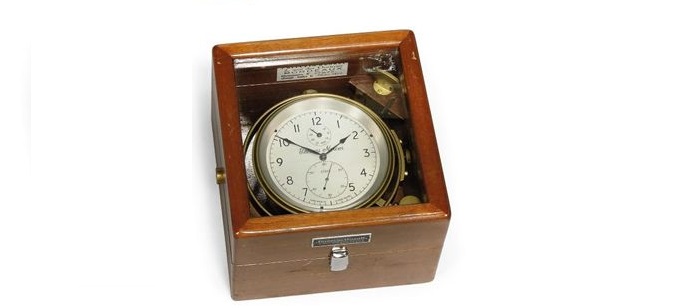The chronometer is an accurate time keeping instrument carried on board. It always shows the GMT.
Use of Chronometer Onboard
The primary use of a chronometer on board of a ship is for Astro-Navigation. Sun is the most commonly used heavenly body for this purpose. The altitude of the Sun changes rapidly and an error of four seconds can create an error of one nautical mile in the observed position.
Accurate time is also essential for running a ships routine and a chronometer provides such accuracy.Currently the GPS is used for both these purposes, but as an alternate measure, a chronometer is still used.

